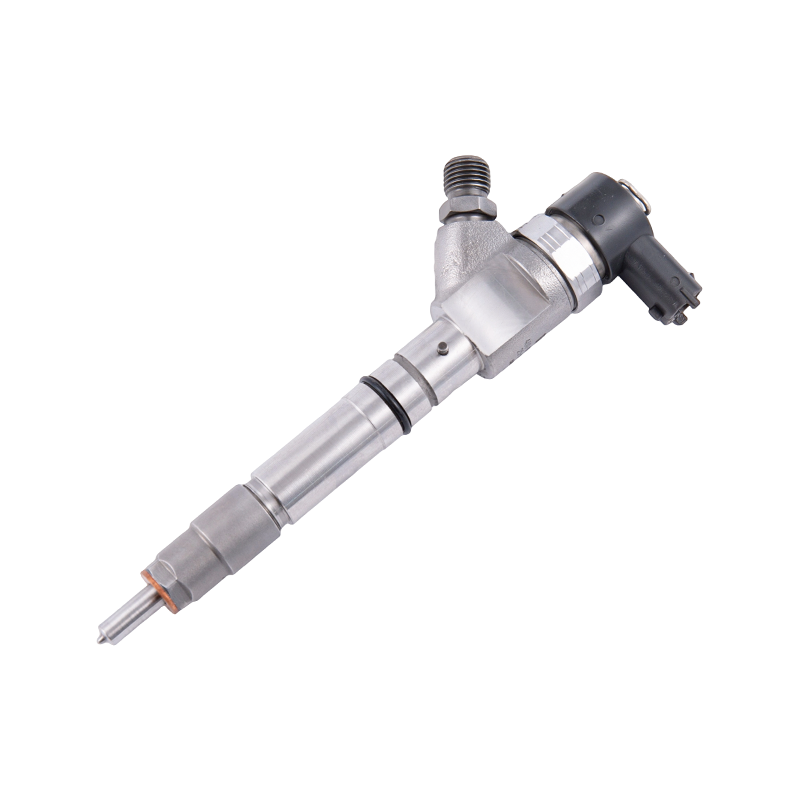News
Excellent product with exquisite craftsmanship.
The common rail injector is a critical component of modern diesel engines, designed to deliver precise amounts of fuel at extremely high pressure directly into the combustion chamber. Unlike older systems that used individual pumps for each cylinder, the common rail system stores pressurized fuel in a shared accumulator, or “rail,” allowing each injector to draw fuel as needed. This design enables precise timing, pressure control, and multiple injection events within a single combustion cycle, resulting in better performance, efficiency, and reduced emissions.
A common rail injector operates as part of a complex high-pressure fuel delivery system that integrates mechanical, hydraulic, and electronic elements. The main components of the injector and their functions are summarized below.
| Component | Function |
| Solenoid or piezo actuator | Converts electrical signals from the ECU into mechanical motion to control fuel flow. |
| Control valve | Regulates the pressure balance on the needle, opening or closing the nozzle at precise times. |
| Nozzle needle | Moves up and down to allow or stop high-pressure fuel flow into the combustion chamber. |
| High-pressure rail | Acts as a shared reservoir that maintains constant fuel pressure for all injectors. |
| Fuel pump | Generates and maintains the high fuel pressure required for atomization. |
The process begins when the high-pressure fuel pump delivers diesel to the common rail. The rail maintains a constant pressure—often between 1,200 and 2,500 bar—ensuring that each injector has immediate access to pressurized fuel. Sensors continuously monitor rail pressure, and the engine control unit (ECU) adjusts the pump and pressure control valve to match engine demand.

When the ECU determines that a cylinder requires fuel, it sends an electrical signal to the injector’s actuator. In a solenoid injector, the magnetic field lifts a valve, relieving pressure on the nozzle control chamber. In a piezo injector, a piezoelectric crystal expands to move the valve. In both designs, this action allows the needle to rise and open the nozzle, initiating injection.
High-pressure diesel flows through micro-sized holes in the nozzle tip and sprays into the combustion chamber as a fine mist. The small droplet size promotes rapid mixing with compressed air, leading to efficient combustion. Depending on ECU programming, injection may occur in several stages—pilot, main, and post injection—to control noise, reduce emissions, and optimize combustion pressure rise.
When the ECU signal ends, the actuator returns to its neutral position, closing the control valve. Fuel pressure in the control chamber increases again, pushing the needle back onto its seat to stop injection. The injector then resets for the next cycle, while the rail pressure regulator maintains constant system balance to prepare for subsequent firing events.
One of the defining advantages of common rail injectors is their ability to perform multiple injections during each engine cycle. These include:
These controlled stages help achieve smoother engine operation, improved thermal efficiency, and lower particulate and NOx emissions. The ECU dynamically adjusts timing and injection duration based on load, temperature, and engine speed.
Common rail injectors have transformed diesel engine performance and compliance. The combination of high pressure, electronic control, and multiple injection phases brings measurable benefits to both light and heavy-duty engines.
Due to their precision and high operating pressures, common rail injectors are sensitive to fuel quality and contamination. Regular maintenance and proper filtration are essential to avoid costly repairs. Common failure indicators include rough idling, excessive smoke, and uneven power delivery. Testing can involve leak-off measurement, spray pattern evaluation, and electronic signal verification. Preventive care, such as replacing fuel filters on schedule and using clean diesel, significantly extends injector life.
A common rail injector in a diesel engine functions as a precisely controlled valve that delivers high-pressure fuel with remarkable accuracy. Through the integration of advanced electronics, high-pressure hydraulics, and optimized nozzle design, it enables cleaner combustion, improved efficiency, and compliance with modern emission standards. Understanding its operation is essential for diagnosing performance issues, maintaining system reliability, and ensuring long-term engine durability.